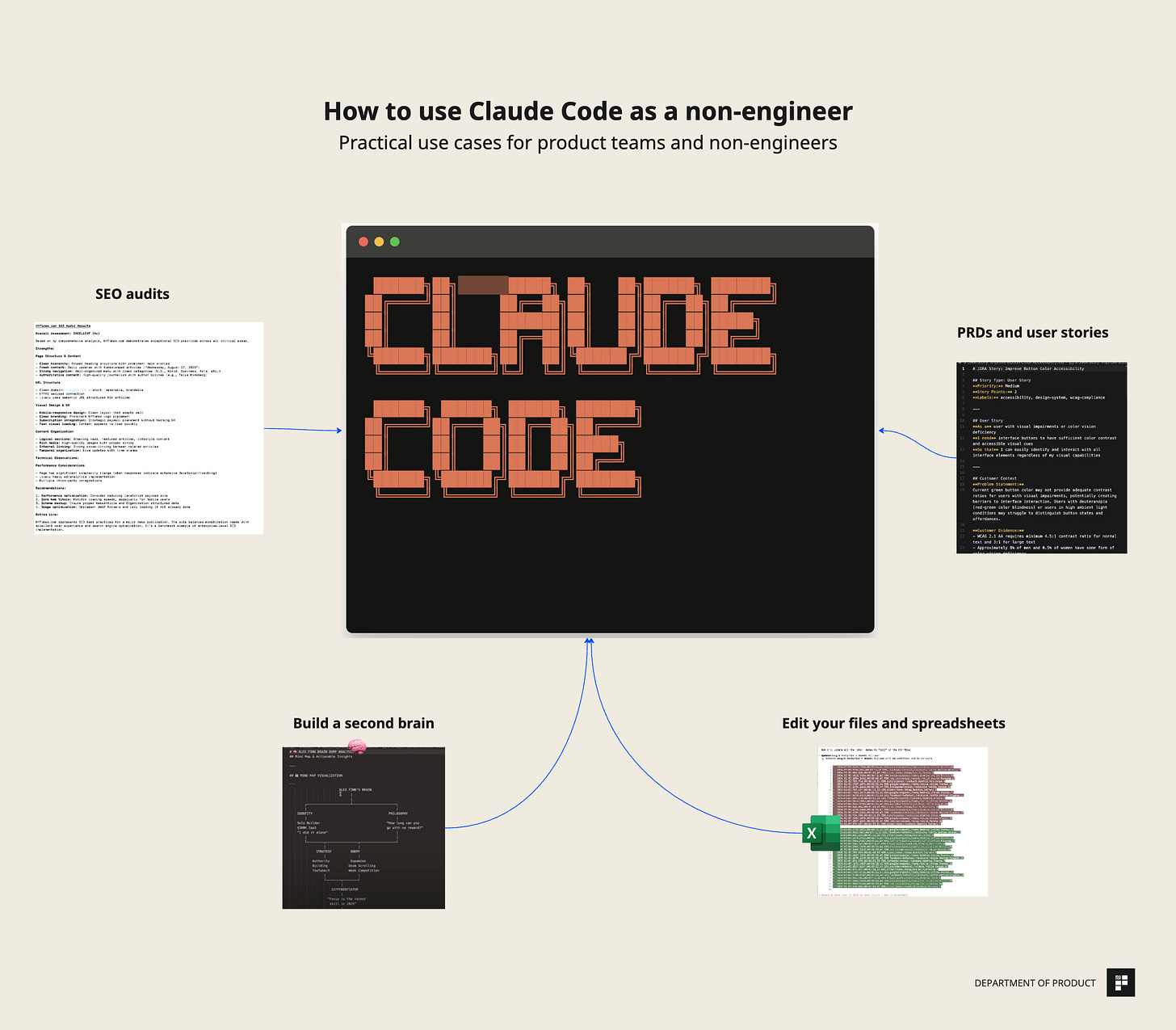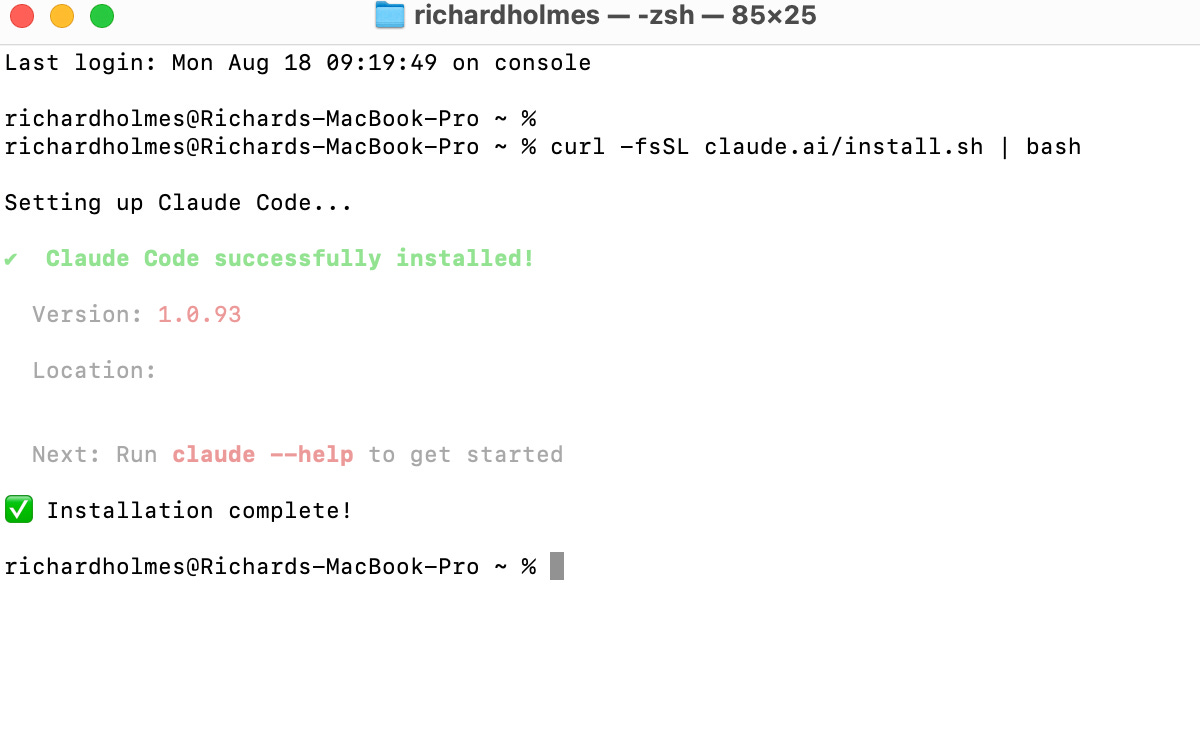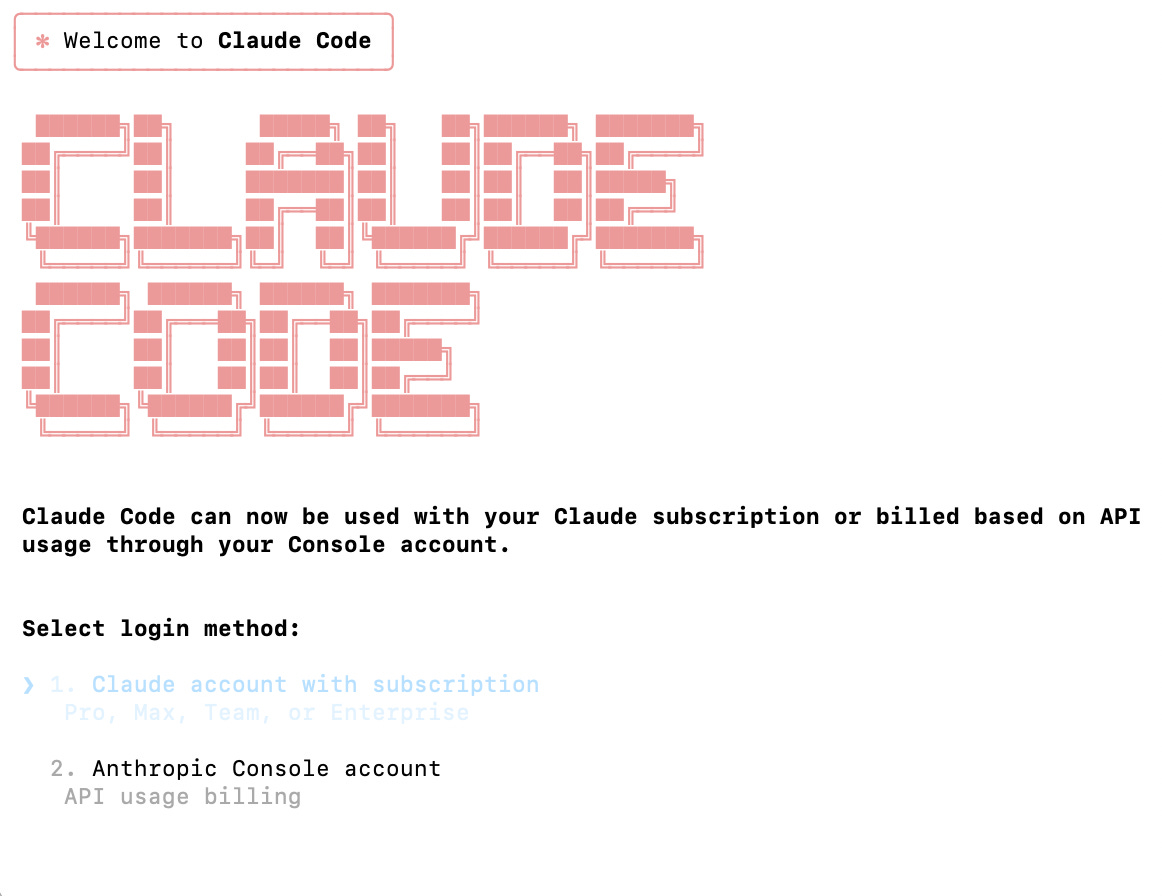How to use Claude Code for non-engineering use cases
🧠 Claude Code without the Code: Agents for PRDs, Jira tickets, SEO analysis, creating a second brain, editing spreadsheets and more. Knowledge Series #84
🔒The Knowledge Series is available for paid subscribers. Get full ongoing access to 80+ explainers and AI tutorials to grow your technical knowledge at work. New guides added every month.
Claude Code is fast becoming the go-to AI tool for product teams - and it isn’t just for engineers. Anthropic recently revealed how its own team members are using Claude Claude with use cases spanning prototyping and feature development, ad generation and documentation:
The most successful teams treat Claude Code as a thought partner rather than a code generator. They explore possibilities, prototype rapidly, and share discoveries across technical and non-technical users. This collaborative approach between humans and AI creates opportunities we're only beginning to understand.
The full article is definitely worth a read to understand how Anthropic’s own teams are using it.
Despite originally being designed for developers, now, an increasing number of non-technical folks like product managers, designers and execs are dabbling with Claude Code to make use of its powerful abilities.
In this Knowledge Series, we’re going to explore some of the practical ways non-engineers can use Claude Code at work to tackle everything from SEO page analysis through to editing spreadsheets, building your own second brain and even writing your own PRDs. It is designed to get you up to speed on the core functionality of Claude Code and how it can be used at work.
If you’re curious about how Claude Code works and want to understand how it might be helpful for use cases beyond just engineering, then this Knowledge Series should help.
Coming up, how to use Claude Code at work for use cases including:
Create AI agents for PRDs and Jira ticket writing - downloadable agent templates included
Organise and edit local files including spreadsheets and more
Perform SEO audits
Building a basic to do app
Managing day to day workflows by building a second brain
Real world examples of how product managers and designers are using Claude Code to build a “Product OS”
First things first - how to set up Claude Code: a beginner’s guide
Most of the other Claude Code tutorials assume that you’re either an engineer who is comfortable with the terminal or you’re already familiar with how it works and have set up Claude Code. For this Knowledge Series, we’ll work on the assumption that you have zero prior experience with Claude Code (even if you do, this will be a bit of a refresh).
Before we dig into getting set up, it’s probably worth a brief explanation of what Claude Code is and how it works.
What is Claude Code and how does it work?
Originally developed for engineers, Claude Code is Anthropic’s agentic coding tool that lives in the terminal on your laptop. It lets developers interact directly with Anthropic’s models for things like writing code, debugging, refactoring - and even building features from text descriptions.
Because it works in the terminal, it is inherently more user-friendly to engineers. Engineers use the terminal for things like GitHub, file management and running scripts / programs. But in recent weeks, the terminal and Claude Code is increasingly being used by non-engineers for all sorts of things.
How to get set up with Claude Code
To get Claude Code set up on your machine, you’ll need to install it. The easiest way to do this is to follow the Quick Start instructions in Anthropic’s documentation.
Claude Code now comes with a new native installation that you can use by opening up the terminal on your machine and pasting in the following:
Mac
curl -fsSL claude.ai/install.sh | bashWindows
irm https://claude.ai/install.ps1 | iexOnce Claude Code is installed you’ll get a confirmation message in your terminal:
In your Terminal, type “Claude” and this will start Claude Code. You’ll see a screen that looks like this. It will ask you to login with a Claude subscription.
Follow the instructions that Anthropic provides and Claude Code will be set up and installed on your machine. Once it’s installed you’ll see a welcome message like this:
With Claude Code installed you can choose to either use it through the terminal or an Integrated Development Environment (IDE) to get started. Even though we’re not going to be using Claude Code for coding per se in these examples, we’ll still set up an IDE to make it easier to navigate files and folders. In this sense, the IDE becomes our UI.
(Setting up Cursor or an IDE isn’t essential - you can still use it through the terminal only.)
For this Knowledge Series, we’ll use Cursor. To install Claude Code in Cursor, click on the Extensions, search for Claude Code and install the official extension from Anthropic. Now we’re all set up and ready to try some practical use cases for non-engineers.
Practical use cases for non-engineers - get hands on experience with Claude Code
OK, now that we’re all set up, let’s dig into some of our first practical use cases for non-engineers.





